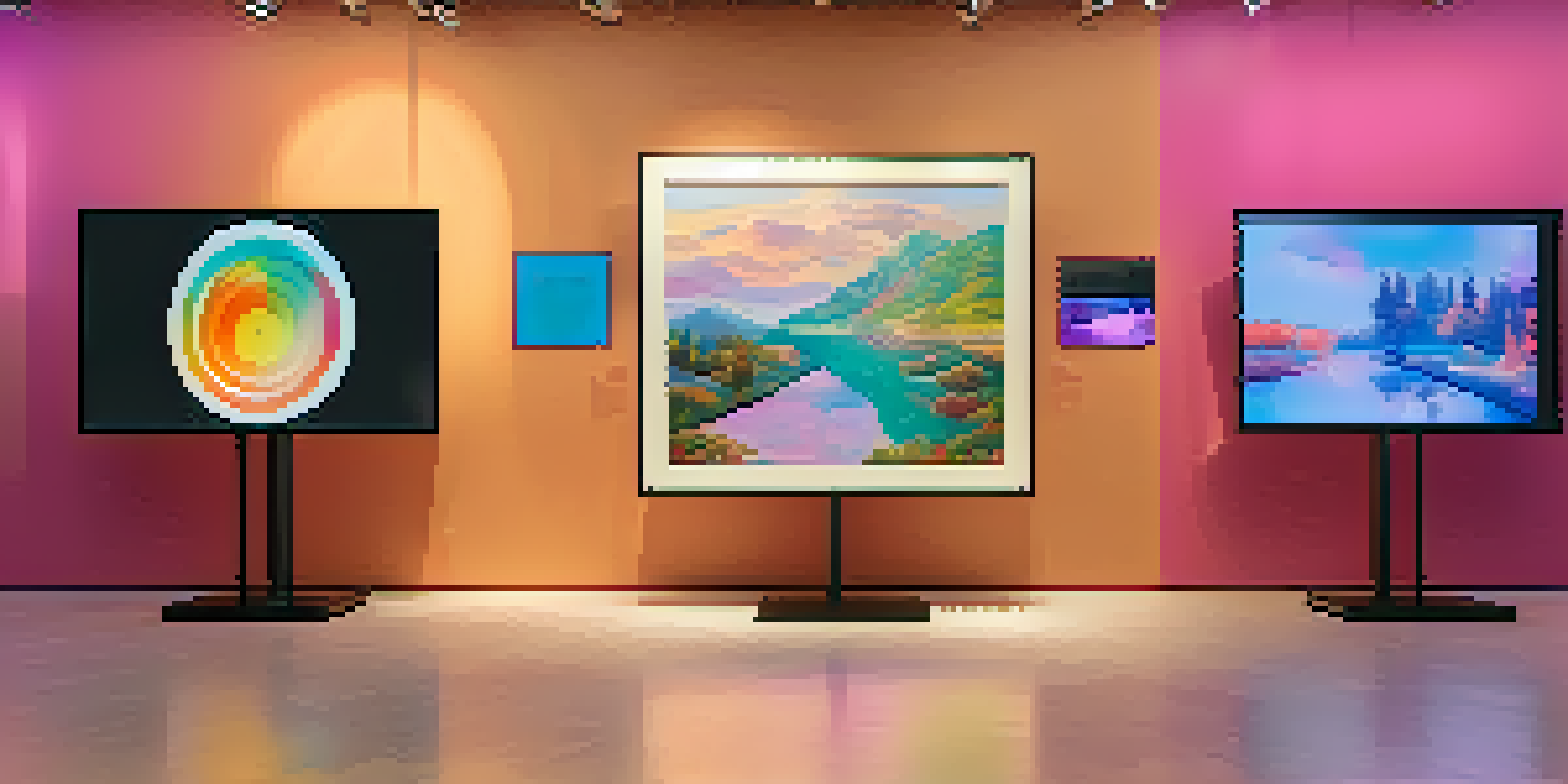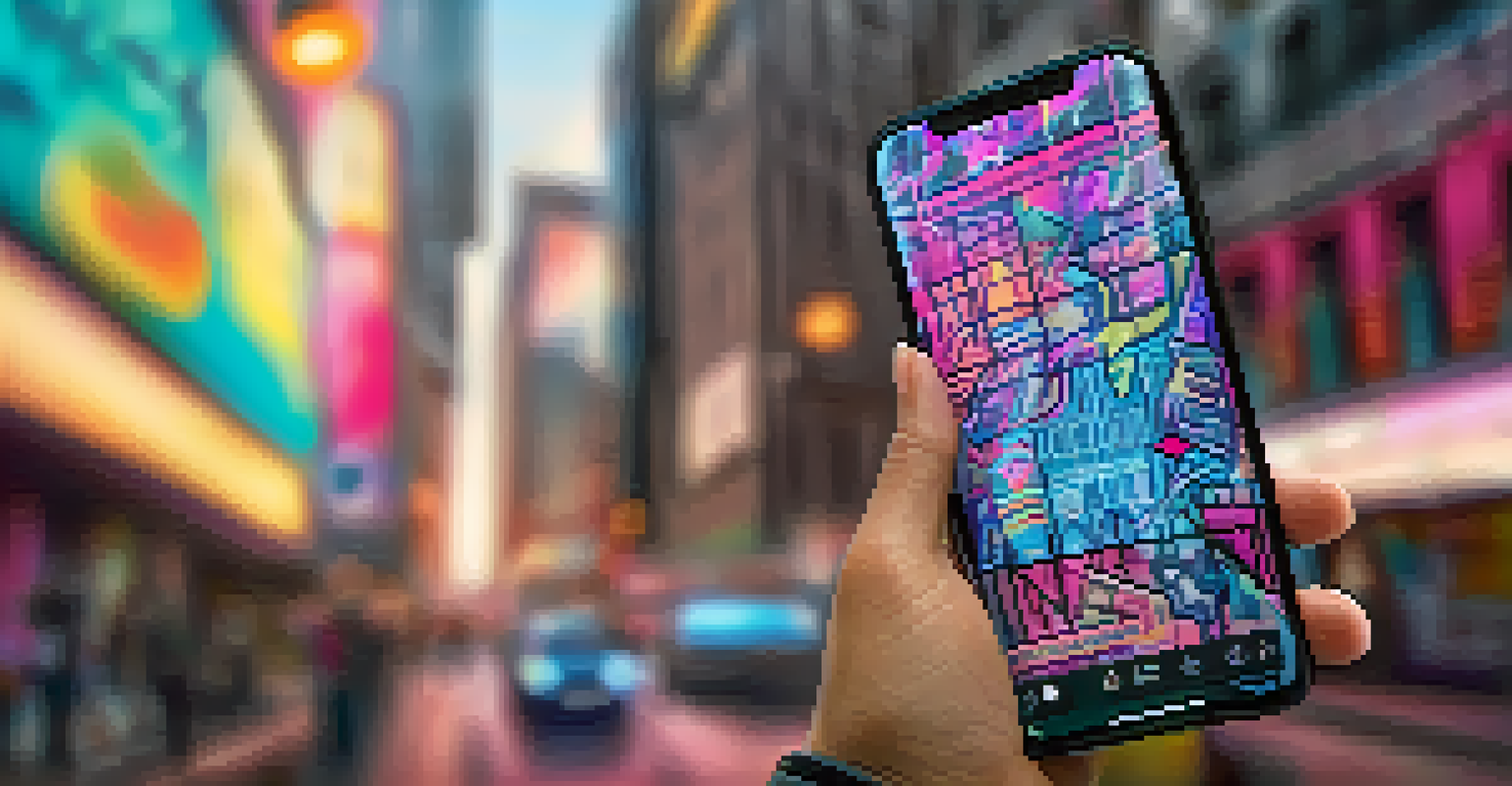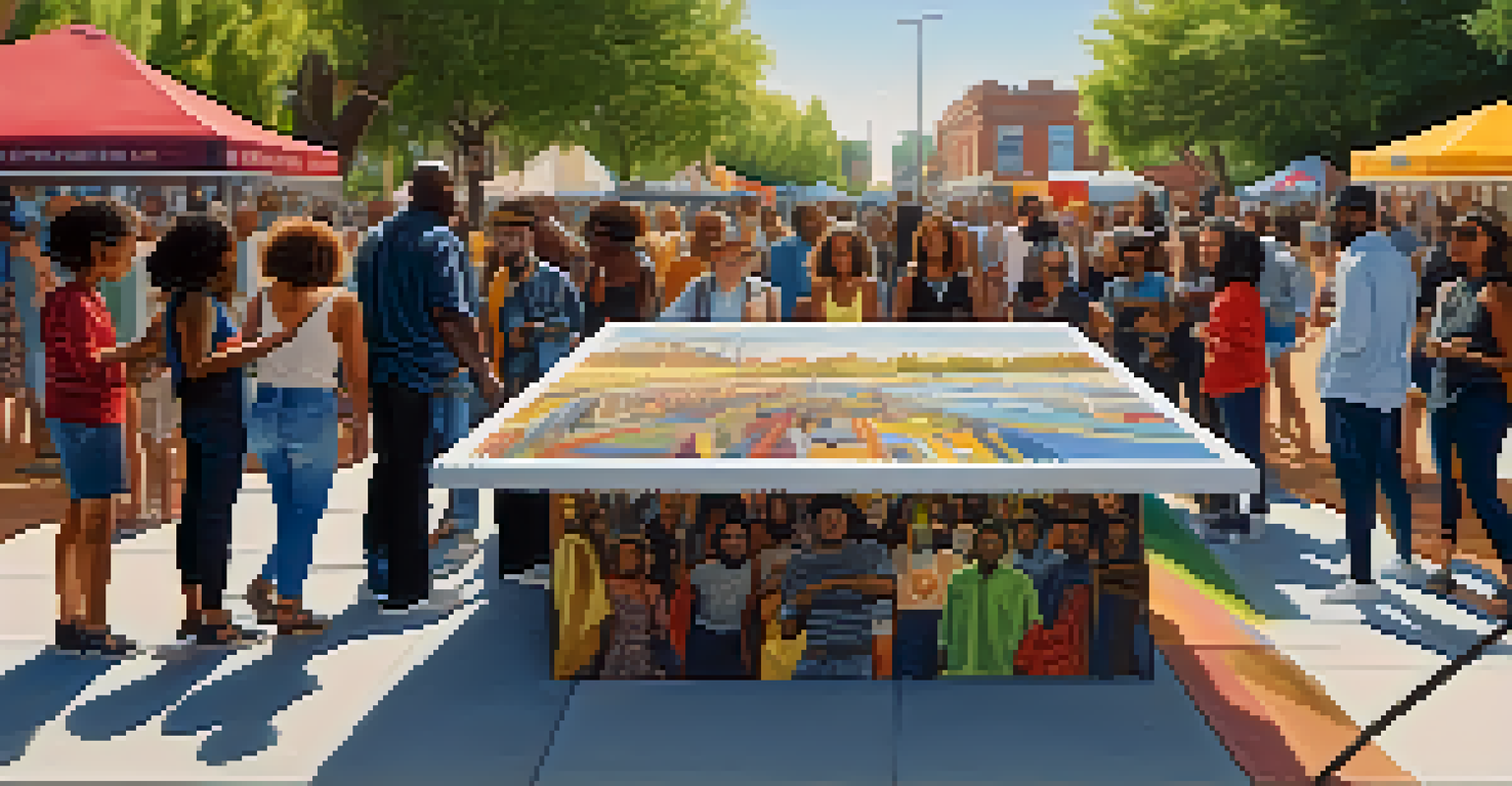NFTs and Representation: A New Avenue for Activism

Understanding NFTs: A Brief Overview
Non-fungible tokens, or NFTs, are unique digital assets that represent ownership of a specific item or piece of content, often secured on a blockchain. Unlike cryptocurrencies, which are interchangeable, each NFT holds distinct value and characteristics. This uniqueness makes them particularly appealing for artists and creators looking to establish provenance and authenticity for their work in the digital realm.
Art is a powerful tool for activism, transforming personal experiences into collective action.
NFTs can encompass a wide range of digital creations, from art and music to videos and virtual real estate. By leveraging blockchain technology, creators can ensure that their work is not only original but also traceable, allowing them to engage directly with their audience. This direct connection can lead to new revenue streams and greater control over how their work is used and shared.
As we dive deeper into the relationship between NFTs and representation, it's essential to understand how these digital assets can serve as tools for activism. By creating and selling NFTs, marginalized voices can gain visibility and support, helping to drive social change in innovative ways.
The Role of Representation in NFTs
Representation is crucial in any form of art, and NFTs offer a unique platform for underrepresented groups to share their stories. Historically, many artists from marginalized communities have faced barriers to entry in traditional art markets. NFTs can help break down these barriers, providing equal opportunities for creators to showcase their work and connect with a global audience.

By amplifying diverse voices through NFTs, we can challenge the status quo and create a more inclusive digital art landscape. This shift not only empowers individual artists but also enriches the cultural tapestry of the NFT space. As more artists share their experiences and perspectives, the art world becomes a more vibrant and diverse environment.
NFTs Empower Diverse Voices
NFTs provide a unique platform for underrepresented artists to share their stories and connect with a global audience.
Moreover, representation in NFTs can inspire future generations of creators. When young artists see individuals who look like them succeeding in the NFT space, it can ignite their passion and motivate them to pursue their artistic dreams. This cycle of inspiration fosters a more dynamic and diverse creative community.
NFTs as a Tool for Social Change
One of the most compelling aspects of NFTs is their potential to drive social change. Many artists are using their platforms to raise awareness about important issues, such as climate change, racial equality, and mental health. By creating NFTs that address these topics, they can not only express their views but also engage with like-minded individuals and communities.
The future of art is not just about aesthetics; it's about using our voices to create change.
For instance, some artists have auctioned NFTs with proceeds going directly to charitable organizations. This direct link between digital art and activism can foster a sense of community and shared purpose, allowing collectors to feel like they are contributing to a cause they care about. In this way, NFTs become more than just collectibles; they transform into vehicles for change.
Additionally, the transparency of blockchain technology enhances the trustworthiness of these initiatives. Collectors can track how their contributions are used, creating a sense of accountability that is often lacking in traditional fundraising efforts. This transparency can encourage greater participation and investment in social causes.
Case Studies: Successful Activist NFTs
Several notable NFT projects have successfully combined art and activism, demonstrating the power of representation. For example, the 'Everydays: The First 5000 Days' by Beeple raised millions and captured global attention, highlighting the potential of digital art. Beeple's success opened doors for many lesser-known artists to showcase their work and share their stories.
Another inspiring example is the 'CryptoPunk' project, which features unique digital characters. Some of these punks have become symbols of social commentary, addressing issues like gender identity and racial representation. These digital figures not only serve as collectibles but also as conversation starters, prompting discussions about representation in the digital space.
NFTs Drive Social Change
Artists are utilizing NFTs to raise awareness and funds for important social issues, transforming digital art into activism.
Moreover, initiatives like the 'Art for Black Lives' project have leveraged NFTs to raise funds for social justice organizations. By creating artworks that reflect the struggles and triumphs of the Black community, artists involved in this project are utilizing NFTs as a means of advocacy, ensuring that their voices resonate far beyond the digital realm.
Challenges Facing Activist NFTs
Despite the promise of NFTs for activism, there are challenges that creators face in this space. One significant hurdle is the environmental impact of blockchain technology, particularly with platforms that rely on energy-intensive processes. This concern can deter socially conscious artists from entering the NFT market, fearing that their efforts might contribute to climate change.
Additionally, the NFT space can be fraught with issues of accessibility and understanding. Many potential creators may lack the technical knowledge or resources to navigate the complexities of minting and selling NFTs. This digital divide can lead to inequities, where only those with the right skills or connections can successfully participate in this new art form.
Furthermore, the commercialization of NFTs can sometimes overshadow their activist potential. As the market becomes more saturated, there is a risk that the original intent behind some projects may be diluted in favor of profit. Striking a balance between artistic integrity and marketability is crucial for maintaining the authenticity of activist-focused NFTs.
The Future of NFTs in Activism
Looking ahead, the future of NFTs in activism appears promising, as more artists recognize the platform's potential to effect change. As awareness of the importance of representation grows, we can expect to see an increasing number of diverse voices enter the NFT space. This influx of creativity can lead to richer narratives and more profound social commentary in digital art.
Moreover, as technology continues to evolve, solutions to current challenges are likely to emerge. For instance, efforts are underway to develop more eco-friendly blockchain alternatives, which could alleviate concerns about the environmental impact of NFTs. These advancements can make the NFT space more appealing to socially conscious creators and collectors alike.
Challenges in Activist NFTs
Despite their potential, creator challenges like environmental concerns and accessibility issues hinder the impact of activist NFTs.
Ultimately, the combination of NFTs and activism has the potential to reshape the art world, encouraging collaboration and innovation. As artists continue to harness the power of digital assets for social good, we may witness a transformative shift in how art is created, shared, and valued.
Getting Involved: How to Support Activist NFTs
If you're interested in supporting activist NFTs, there are several ways to get involved. One of the most straightforward methods is to purchase NFTs from artists whose work resonates with you. By investing in their creations, you're not only acquiring unique art but also helping to fund their advocacy efforts.
Additionally, consider sharing the work of activist artists on social media. By amplifying their voices, you can help to raise awareness about important issues and encourage others to engage with these creators. This kind of support can significantly enhance the visibility of marginalized voices in the NFT space.

Finally, don't hesitate to educate yourself about the NFT landscape and the challenges it presents. Understanding the nuances of this digital art form can empower you to make informed decisions about your involvement, whether as a collector or a supporter. Together, we can foster a more inclusive and vibrant NFT community that champions representation and activism.